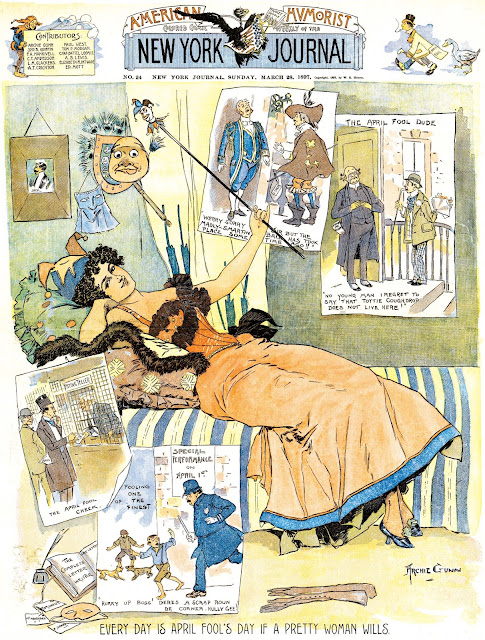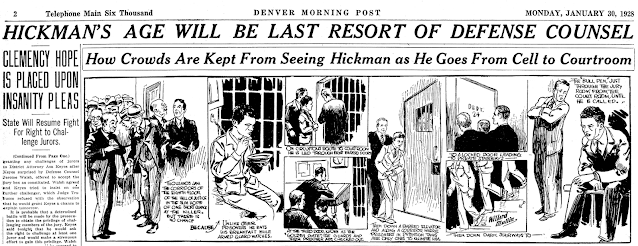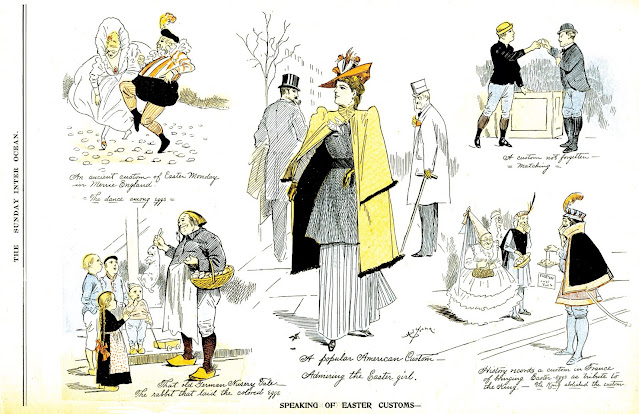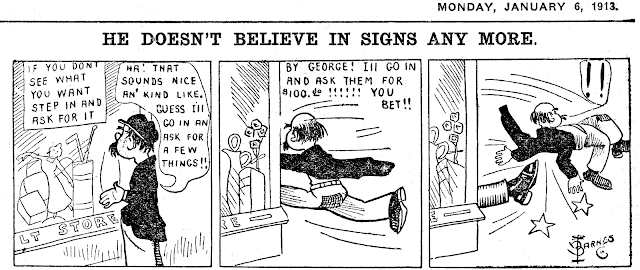Here’s an interesting one-shot by A.T. “Crite” Crichton that ran in the New York Sunday Journal on May 9 1897. When I first encountered it my reaction was one of horror, thinking that Crite was making some utterly tactless gag about the sinking of the U.S.S. Maine. But then I realized that happened almost a year later, so Crite dodges that bullet. But it’s still an odd strip, because Lorenzo, whose rowboat is called “Unkel Sam,” is sparring with and destroys a U.S. battleship. If Lorenzo was not a patriotic American (evidenced by the name of his boat) this could be a comment on U.S. – Italian relations, I suppose, but that’s just not the case. That got me to wondering if Crite had no intention of having that battleship fly a U.S. flag. Looking very closely at the page, I honestly can’t tell for sure whether any of that flag design is by Crite (that is, in black) or if the whole contents of an empty flag were supplied by the Journal‘s colorist.
Beyond this insoluble conundrum, a few additional comments. First, this is a very early example of what I’d call a Baron Munchausen gag, one in which someone is evidently relating (in the textual portion) after the fact some patently impossible feat they performed. This theme was later picked up by F.M. Howarth who created the classic Munchausen take-off strip, Old Opie Dilldock’s Stories.
An’ anudder t’ing …. probably wearing out my welcome by now, but I also wanted to point out what an amazing bit of cartooning this is — notice the waves on the sea, how they pitch the boat to and fro, and how Lorenzo’s body reacts to that during his lassoing exercise. Crite could have made things much easier on himself by drawing a calm sea, but he opts to stretch his drawing skills and show us what an impressive artist he is.












Mr. Holtz, I have two questions about the New York Herald Sunday pages.
First, were there any popular strips before Bunny hit big with Foxy Grandpa, or was it mainly one-shots?
And my second question is about the year 1901. Do you know exactly when it became a 4-page section? It was an 8-page section until the end of March, then it was reduced to a 6-page section starting in April. It was down to four pages by the end of 1901, but I don't know precisely when that occurred.
Thank you for your time.
Mike Ernest
Hi Mike —
Because I did not personally index the Herald Sundays, but rather relied on Ken Barker's index, I cannot reliably answer your questions regarding the number of pages. You are right, however, that their first real breakout hit was Foxy Grandpa, which was soon poached by Hearst. Then there was Willie Westinghouse Edison Smith, poached by North American Syndicate. Their earliest series, and it was a beauty, was Rice & Tapioca, way back in 1897. They did generally shy away from series, though, until 1900.
I wait anxiously for some online newspaper site to bring the Herald into the digital age for more info. (Fulton Postcards has the Herald, I believe, but of course that means it is almost as inaccessible as if it were not on the web at all). –Allan